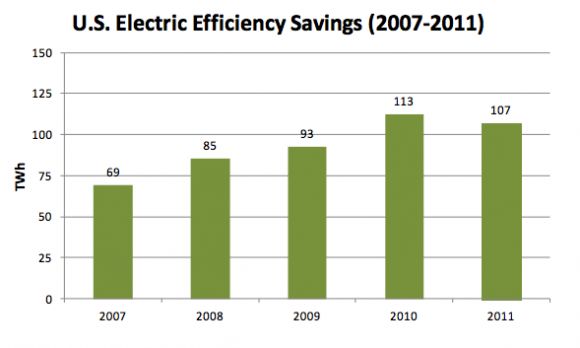We've reported on the dramatic increases in spending on energy efficiency programs in the U.S. By 2025, spending on efficiency programs in the electricity and natural gas sectors will double over 2010 levels -- likely reaching $9.5 billion.
So how much energy are we actually saving? A new report from the Institute of the Edison Foundation digs into the impact on the electricity sector.
From 2006 to 2010, efficiency expenditures doubled in the U.S. And you can see how that played out in 2010 and 2011 as more states developed policies promoting efficiency. In both of those years, customer-funded utility programs saved enough energy to power more than 9 million average American homes.

The landscape for efficiency in the U.S. is changing quickly. Half of all states now have efficiency targets in place that cover roughly two-thirds of the population. Many of the new programs are appearing in the Midwest and Southeast, opening up new markets for efficiency.
The IEE report shows that four states have doubled their energy efficiency budgets in 2012 and six states have increased their budgets by 50 percent. Many of these Midwestern and Southeastern states that are ramping up efficiency programs get a substantial portion of their electricity for coal, potentially setting the stage for strong reductions in carbon emissions.
IEE projects that include spending on customer-funded utility programs will increase to $14 billion by 2025. This is on the high end of what researchers at the Lawrence Berkeley National Lab predicted in a recent analysis.



